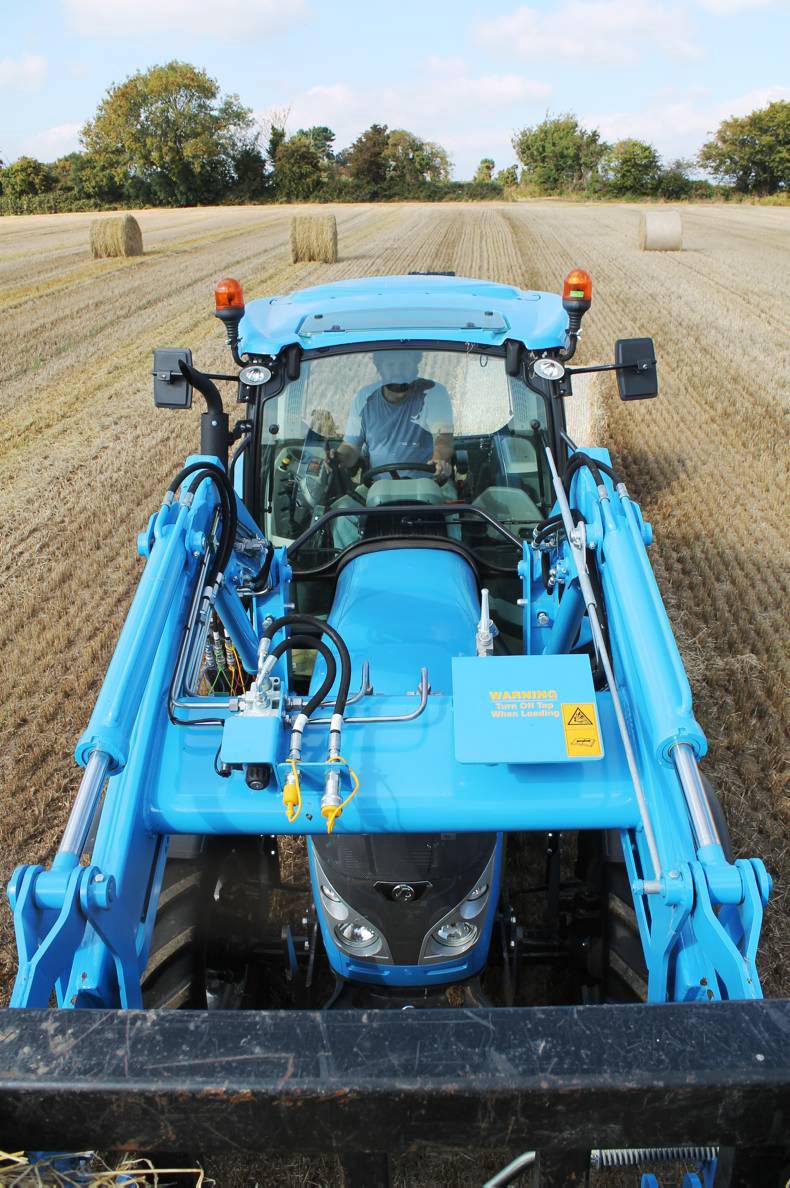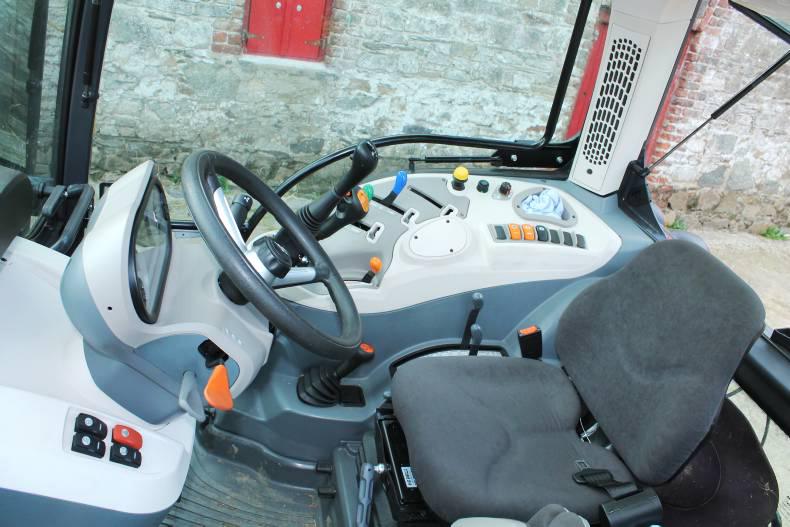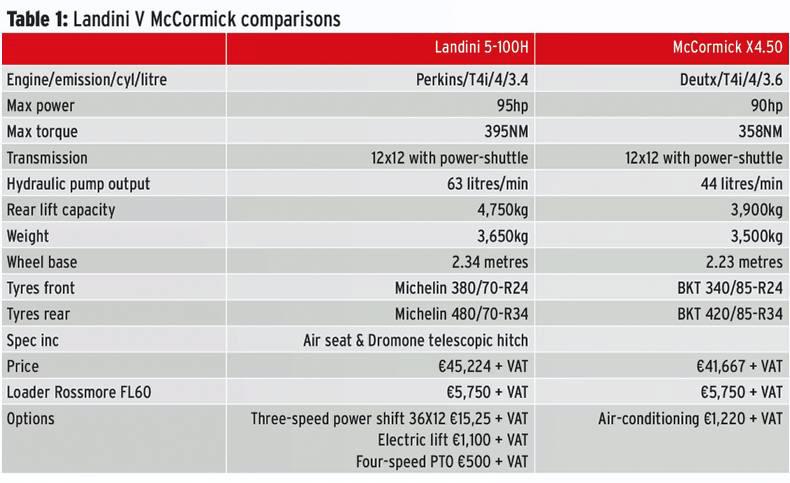
LOYALTY CODE:
The paper code cannot be redeemed when browsing in private/incognito mode. Please go to a normal browser window and enter the code there

LOYALTY CODE:
The paper code cannot be redeemed when browsing in private/incognito mode. Please go to a normal browser window and enter the code there
This content is copyright protected!
However, if you would like to share the information in this article, you may use the headline, summary and link below:
Title: Tractors show true colours in Landini v. McCormick trial
Bruce Lett tests the latest offerings from Landini and McCormick to answer the age-old question – is it red or blue for you?
https://www.farmersjournal.ie/tractors-show-true-colours-in-landini-v-mccormick-trial-196642

ENTER YOUR LOYALTY CODE:
The reader loyalty code gives you full access to the site from when you enter it until the following Wednesday at 9pm. Find your unique code on the back page of Irish Country Living every week.

CODE ACCEPTED

You have full access to farmersjournal.ie on this browser until 9pm next Wednesday. Thank you for buying the paper and using the code.

CODE NOT VALID
Please try again or contact us.
For assistance, call 01 4199525
or email subs@farmersjournal.ie
Sign in

Incorrect details
Please try again or reset password
If would like to speak to a member of
our team, please call us on 01-4199525
Reset
password
Please enter your email address and we
will send you a link to reset your password

If would like to speak to a member of
our team, please call us on 01-4199525
Link sent to
your email
address
![]()
We have sent an email to your address.
Please click on the link in this email to reset
your password. If you can't find it in your inbox,
please check your spam folder. If you can't
find the email, please call us on 01-4199525.
![]()
Email address
not recognised
There is no subscription associated with this email
address. To read our subscriber-only content.
please subscribe or use the reader loyalty code.
If would like to speak to a member of
our team, please call us on 01-4199525
 This is a subscriber-only article
This is a subscriber-only article
Update Success !






In this user test, we had the opportunity of looking at two comparable models from the ARGO stable. In the blue corner was a Landini 5-100H and in the red corner, a McCormick X4.50. Both were supplied by D&S Machinery Ltd, ARGO’s importer in Ireland.
We didn’t have both brands at the same time. D&S offered to drop us down the McCormick when collecting the Landini. And we weren’t going to turn down such an opportunity.
Test conditions were identical, but the Landini performed more tasks because it arrived first, so the larger focus here is on the Landini.
Both machines are 100hp tractors with mechanical lift control, mechanical spool valves and a largely mechanical transmission. I say largely because both feature a forward-reverse power-shuttle.
The tractors tested fall into one of the most populated and popular tractor categories in Ireland.
The differences between the two are that the Landini 5-100H uses a Perkins engine, while the McCormick X4.50 uses a Deutz. Back-ends are different too, but both are from ARGO.
Tyres on the McCormick were BKT, while the Landini was shod on Michelin. The Landini features a Dromone telescopic hitch, while the McCormick was fitted with an Italian hitch. The Landini was fitted with air conditioning, while the McCormick was not.
And then there’s the price. D&S quoted a list price of €45,224 plus VAT for the Landini 5-100H and €41,667 plus VAT for the McCormick X4.50.
Landini 5-100H
There are four models in the Landini 5H lineup – the 5-090H, 5-100H, 5-110H, and the 5-115H – with horse powers from 85hp to 113hp.
Our test model had a rated maximum power of 95hp from its T4i Perkins commonrail engine. Exhaust gas recirculation and a diesel particulate filter are used to scrub the exhaust emissions.
There are a number of build options from Landini, including mechanical shuttle transmission, performance boost package with three powershift speeds (36 + 12)and a creeper transmission option.
Also available for the Irish market is the 5-100H champion model – our test tractor. As mentioned earlier, this is a 12x12 (40km/h), power-shuttle model with mechanical lift control and Dromone telescopic hitch fitted as standard.
The test 5-100H featured ARGO’s latest four-pillar cab design with low roof and clear skylight for loader operation. This is a very smart and well-built cab with doors that are not too large or unwieldy for a four-pillar design.
Inside, all the controls are well laid out and within easy reach. On the right-hand console are the hand-throttle, main gear stick, hydraulic spool valve levers and various switches. The main gearstick incorporates a clutch-declutch button for making gear changes without pressing the clutch pedal.
While a lot of the main controls are mechanical, four-wheel drive, diff-lock and PTO function are all electrically controlled via switches on the right-hand control panel.
A control knob for adjusting the aggressiveness of the power-shuttle function is also mounted on the same control panel. More mechanical controls include the stubby range lever and lift control levers closer to ground level, between the driver’s seat and control panel.
The tractor is fitted with a Rossmore FL60 loader and a joystick control lever for this has been installed in what would have been a cup/bottle holder in front of the right-hand control panel.
To test the practical aspects of the Landini 5-100H, we had quite a few tasks to perform. These included windrowing straw, baling straw and ultimately loading and bringing in the same bales.
Windrowing with the PZ Haybob was no issue for the 5-100H and allowed us work time to get used to the tractor’s controls. Rear linkage was pretty standard stuff, with robust Cat-2 hook ends and adjustable turn-buckle drop arm on the right, plus decent lift arm stabilisers.
Running the Claas 46 baler was far more involving, with lots of stop-starts, operation of hydraulic functions and much more.
From a power perspective, the four-pot Perkins never missed a beat.
Sharing the engine’s hood space was a DPF sitting on top of the engine. A DPF never fails to make me feel a bit nervous around straw or hay, but regeneration of the DPF can be paused by pushing a button on the right-hand dash console.
Despite there being a lot of stuff under the bonnet, it was all packed away nicely and did not obscure the front view. Large doors provided excellent side views and the rear view was also good.
There was a little bit of gear changing involved to cater for different-sized rows of straw and making the bale. The gear change was very slick and the declutch button worked well.
 On to loader work and the Rossmore FL60 loader and brackets were painted in Landini blue. This combination worked really well and looked very smart.
On to loader work and the Rossmore FL60 loader and brackets were painted in Landini blue. This combination worked really well and looked very smart.
In operation, loader function benefited from the tractor’s 63 litre/min hydraulic system. Still nothing like the 100 litre/min flow offered by PFPC systems, but certainly better than the traditional 40 litre/min system for many tractors in this class.
From a visibility perspective, the Landini 5-100H was pretty good. The clear roof panel helped while operating the loader at height. The loader joystick was well positioned and slick to operate. The transmission shuttle was really nice and could be easily adjusted if required.
Handling the straw bales was no issue, but heavier 4x4 silage bales would require some weight hanging out of the tractor’s rear lift arms. Unballasted, the 5-100H was more than a little light on its back feet with a silage bale on the loader.
With the trailer loaded, attaching to it was made easy by the Dromone telescopic hitch.
The Perkins engine was really gutsy hauling the loaded trailer up the field and road. The slick gear change made gear-climbing a positive experience.
Braking was provided by multi-disc brakes in both rear and front axles.
Keeping it simple, the heating and air conditioning systems were also easy to understand and operate.
It kept all glass clear on the wet days, but the front wiper could do with an extra speed to cope with the volumes of water that fall here in Ireland.
Overall, we were really happy with the Landini 5-100H. Controls were simple, the transmission slick and the engine gutsy. The cab may be a bit small for larger operators, but you get used to it.
It feels and seems well put together with a very smart design and cab. It is perhaps a little light on the rear for handling heavy bales, but this is nothing a little counter-balance won’t sort out.
The retail price is €45,224 plus VAT. Add the VAT plus Rossmore FL60 loader (€5,750 plus VAT) and your full retail is a bit heavier at €62,698. A trade-in and dealing should reduce this figure to something more attractive.
McCormick X4.50
McCormick’s X4 series is a little larger, comprising six models from 64hp to 107hp. All are powered by Deutz C4DT four-cylinder turbo engines with intercooler and electronic common rail injection system.
The engines that power the X4 series come in two displacements and six power ratings. The three more powerful models feature 3.6-litre engines with maximum power outputs of 90hp, 99hp and 107hp. The three lower power models are equipped with 2.9-litre engines that deliver up to 64hp, 69hp and 76hp.
Deutz meets Tier 4i regulations without a DPF on the McCormick X4 series. It uses an innovative exhaust gas recirculation system (EGR) with diesel oxidation catalyst (DOC) to meet the regulations.
The X4 series is available with 12x12 or 16x16 creep transmissions featuring a mechanical or power shuttle for direction changes. Available with the power-shuttle variants is an Eco Forty mode that allows 40km/h to be reached at a fuel-sipping 1,900rpm.
The McCormick X4.50 test tractor has a maximum power of 90hp. Like the Landini 5-100H, transmission is a 12x12 mechanical unit with power-shuttle. In fact, the cab is almost identical inside and out with the exception of a few switches (no DPF, so no switches to control regeneration).
Externally, there is of course the colour difference and the X4.50 features a slightly different back-end.
A non-telescopic hitch from Archetti Technology in Italy is standard and a telescopic variant is not available. It is hoped that a standard Dromone version will be available in the future.
Linkage is Cat-2 with a turnbuckle adjuster on the right-hand drop arm and again, decent-looking stabilisers. Two double-acting spool valves are standard.
The test tractor was fitted with a 44 litre/min hydraulic pump and has a quoted lift capacity of 3.9t, both quite a bit less than the Landini.
In the flesh, the McCormick X4.50 is as smart and as well-finished as the Landini. The cabs are virtually identical throughout with the exception that the McCormick was fitted with an air-suspended seat.

Like the Landini, there are some pockets and storage spaces in the cab, but I would argue that there are not enough. A feature of the modern tractor is the lack of storage spaces for the tools of the trade.
A DOC sits on top of the Deutz engine and in reality is not that much smaller than the DPF on top of the Perkins engine. Again, it is not substantial enough in size to raise the bonnet height or obscure visibility.
In work, the differences are a little more noticeable. You feel the small difference in horsepower with a fully loaded bale trailer and the slightly smaller capacity hydraulic pump makes the loader a little slower. Negligible, but noticeable.
Without a telescopic hitch, attaching to the trailer will test the driver’s skill in aligning the hook and trailer eye.
Down to the nitty-gritty. The McCormick X4.50 in the test spec retails for €41,667 plus VAT. Add the VAT and a Rossmore loader, the retail price is €58,332. That is €4,375 less than the Landini, probably another year’s payments if financing a straight buy or two years on a trade-in.
You would most definitely have to consider your options and payment capacity carefully.

SHARING OPTIONS: